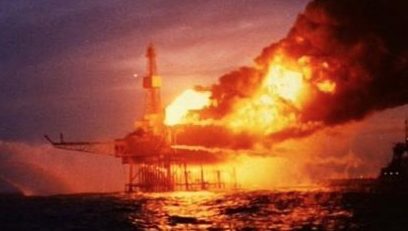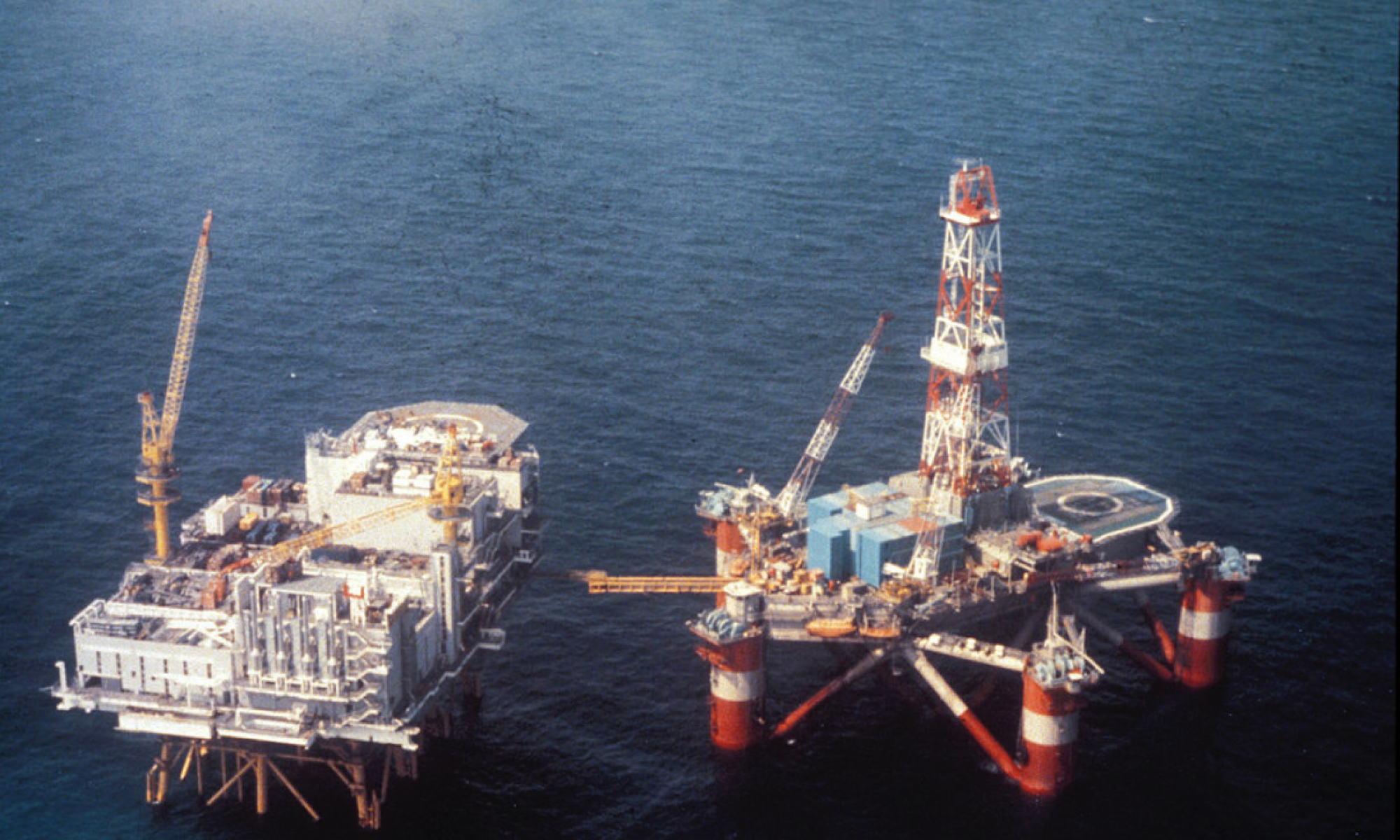Before an oil or gas well can produce steel tubing or ‘casing’ is cemented in the entire length of the well, typically 14,000 feet. Within the casing is the drilling fluid or ‘mud’ which is weighted to balance the formation pressure opposite the potential production zone, which is typically 50 to 100ft in depth near the bottom of the well.
Too much weight and the mud will push the oil or gas away from the well, too little and the well could ‘blow out’. Of course this necessary balance disappears with the cemented casing. A solid barrier of cement and steel between the oil or gas and the route to the surface inside the casing.
So how does that oil or gas get out?
Well, that’s where we come in, shooting holes into the formation using shape charges of high explosives typically every 3 inches. So for a 100 ft zone that would be 400 shaped charges. These cleverly create very high speed and molten copper bullets which will go through the steel casing, cement and several inches into the porous oil producing formation, usually limestone or sandstone.
Reduce the drilling mud weight and the well starts to produce. Simple.
There is a more dramatic way to bring the well ‘in’ and that’s to remove all the drilling mud before we blast the holes. Now there is only surface pressure in the casing and typically 5000 pounds per square inch (psi) in the formation!
Extreme but favoured by some company men, including mine.
Our guns have to be lowered through pressure control equipment at the drill floor to contain the sudden pressure when the shot is taken. This particular well was a gas one with the gas being compressed to a liquid down at the formation level.
After a very early morning start, having positioned the guns accurately opposite the production zone I double checked our equipment. The company man confirmed all their preparations were in order. All the crew was alerted and the rig floor cleared.
I cranked up the electric current, the detonator fired and 400 charges went off nearly 3 miles below the seabed. Our surface pressure control equipment which had been hanging limply to the side instantly shot vertically rigid, 5000 psi gas suddenly all the way to the deck.
If there was any weakness it would manifest now. A poor seal, a weak joint, not enough grease sealing our cable. All quiet.
“Okay, Big Blue, get your kit out of the hole so we can start prepping this well for production.”
After a slow retrieval and dismantling our gear with the well closed off below the drill floor with hydraulic valves I and my crew headed for bed. It was after all about 3 am.
In those days my crew of three and myself shared a windowless accommodation room. Two bunk beds with me preferring ‘up top’ to escape most of the smoke from my nicotine addicted crew. We all crashed out into deep sleep.
The rig alarm bell woke us all up with a start.
Light on – 5 o’clock on my watch, but 5 pm already for a practice drill? Couldn’t be 5 am that would mean ‘abandon rig’ for real. But we couldn’t have been sleeping for over 12 hours…
My God, this was for real.
Throwing on our overalls, (should we be putting on the clumsy cork life preservers?) we opened our cabin door. The increased din from the alarm made communication only possible by shouting. Everyone in the accommodation block seemed unsure what to do. I went to the airlock double doors and looked outside. A high pressure screaming wail filled the night air and vast clouds of gas drifted downwind from the rig. White limestone mud from the well covered the decks.
A spark would turn the rig into a fireball.
Returning inside I found several men lighting roll ups to calm their nerves.
“Royking forbudt!” I yelled “Blase ut!”
Everyone was reluctant to accept we should be abandoning the platform. The circular enclosed life rafts were the stuff of nightmares with two handles in the roof. One to lower the boat the 100ft down to the water. The other to release the boat from its cable. Get that order wrong…
We also heard rescue helicopters wouldn’t come near us incase they ingested the gas causing its ignition.
I decided to go to the Company office on the top deck to let them know the whereabouts of several guns I had prepared for the next well to be perforated in case of fire. Racing up the metal stairs I knew time was running out.
“Any ideas, Big Blue?” Greeted me as I took in the reality that these bosses had no clue what to do. I conveyed my equipment information and exited.
With my legs like jelly I calmly retraced my steps down towards the accommodation block. What was the point of rushing? Our fate would soon be decided. After all this well could blowout for another 20 years…
And then the screaming stopped. The gas cloud drifted away from the platform leaving clear air behind. The danger was receding moment by moment. Feelings of relief yet anger as if somebody had played a big joke on us. Yet we knew we had a very lucky escape.

A workman down on the lower decks that the well head comes up through saw that the casing had split open. The torrent of gas and limestone formation was blasting horizontally out towards the side of the platform.
Calm as a cucumber he wound closed a manual well valve a deck below the blowout. The well, and us, were saved.
The Irish legend that hearing the female Banshee’s Wail is the precursor to death did not, on this occasion, come to pass.
